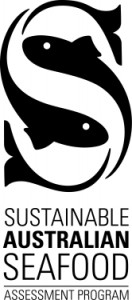Hey Everyone. I’m so happy to have Emma Stirling, an Australian Accredited Practicing Dietitian (APD), guest posting for you today. I hope you all enjoy her post on omega 3s. To read more about Emma, have a read at the end of the post.
– – –
Guest Post: Catching on to omega 3’s with Emma Stirling APD
If you’re reading this blog and you’re a health food lover, you’re bound to be already hooked on omega 3’s. But have you heard the latest news on the mind and mood benefits? How much is enough? And what to do if you’re vegetarian? Let’s take a closer look:
What are omega 3’s?
Omega 3’s, commonly known as fish oils, are long chain polyunsaturated fatty acids found in large quantities in fish – especially oily fish and other seafood. In fish, omegas 3’s are categorized into two types – EPA (eicosapentenoic acid) and DHA (docosahexanoic acid).
Why all the health hype?
One of the first clues to the heart health benefits of omega 3’s came from studies on Eskimos, particularly the Greenland Inuit population, who, despite consuming a diet high in both fat and cholesterol, have a very low risk of cardiovascular disease.  Vital during pregnancy and for infant brain development, omega 3’s are also being studied for their anti-inflammatory and mind-mood links too. Preliminary research suggests that omega 3’s keep cell membranes in the brain more fluid and is likely to play a role in ongoing mental health and cognition. This includes potential benefits with Alzheimer’s disease and depression. Studies have also shown that people with depression commonly have low levels of omega 3 fatty acids and when these levels are boosted, depressive symptoms are reduced. You can read more in the full report from a recent scientific symposium: Mental health, cognition and omega 3’s – what do we know? [source]
Vital during pregnancy and for infant brain development, omega 3’s are also being studied for their anti-inflammatory and mind-mood links too. Preliminary research suggests that omega 3’s keep cell membranes in the brain more fluid and is likely to play a role in ongoing mental health and cognition. This includes potential benefits with Alzheimer’s disease and depression. Studies have also shown that people with depression commonly have low levels of omega 3 fatty acids and when these levels are boosted, depressive symptoms are reduced. You can read more in the full report from a recent scientific symposium: Mental health, cognition and omega 3’s – what do we know? [source]
How much is enough?
To prevent a deficiency of long chain omega 3’s, characterized by rough, scaly skin and dermatitis, health authorities recommend 90mg/day for women and 160mg/day for men. However, to optimise diets for lowering chronic disease risk including cardiovascular disease, a much higher amount is recommended: for women 430mg per day and for men 610mg per day. A good rule of thumb is to aim for 3 serves of oily fish per week.
Where to get it?
You should try and favour oily fish to help meet your intake of protective long chain omega 3 fatty acids. The Omega 3 centre list “super sources†of oily fish in Australia  (150g serve, raw weight) as containing at least 2000mg of long chain omega 3’s per serve – Atlantic salmon (farmed, Tasmania), NZ king salmon (farmed), canned sardines, canned salmon (pink and red), rainbow trout (farmed, Australia), canned mackerel, barramundi (farmed) and swordfish. For a guide to other “excellent†and “good†sources visit their website: www.omega-3centre.com
Oily fish, other fish and seafood are the main sources of long chain omega-3s in our diet with eggs and lean red meat providing smaller amounts. Fortified foods and supplements (both marine and algal sources) are also available, with omega 3 DHA enriched cow’s milk being a handy choice for fussy toddlers.
 Plant based sources of omega 3’s, such as flaxseed or chia seeds, need to be converted into the long chain form with the body and unfortunately this process is not that efficient. You can read more in The Scoop on Nutrition post on Cha Cha Chia – should we dance for joy about the new super seed.
Plant based sources of omega 3’s, such as flaxseed or chia seeds, need to be converted into the long chain form with the body and unfortunately this process is not that efficient. You can read more in The Scoop on Nutrition post on Cha Cha Chia – should we dance for joy about the new super seed.
What else is important when choosing fish?
It’s also a good idea to think about the sustainability of your fresh (and canned) catch. At last count there were 18 targeted fish species in Australian waters that are overfished. But that’s not even half of it. Ecosystem change, habitat damage and bycatch are other measures, along with water pollution, marine pests and climate change.  According to Dr Chris Smyth, from the Australian Conservation Foundation, a new assessment process for wild caught and farmed seafood products will make it easier for shoppers, chefs and restaurant goers to go green.  The Australian Sustainable Seafood Assessment Program was developed in conjunction with the University of Technology, Sydney and a team of leading marine scientists. A key feature of the Program is its focus on seafood products, not species.â€Â Why? Well the same species may be caught or farmed sustainably in one area but not in another. For further information: www.acfonline.org.au
The Australian Sustainable Seafood Assessment Program was developed in conjunction with the University of Technology, Sydney and a team of leading marine scientists. A key feature of the Program is its focus on seafood products, not species.â€Â Why? Well the same species may be caught or farmed sustainably in one area but not in another. For further information: www.acfonline.org.au
Finally we need to be mindful of potential contaminants like mercury in certain fish species. The government food regulator keeps a watchful eye and sets recommendations for all people, with additional caution for women during pregnancy and young children. For a guide to Mercury in Fish and species to limit, visit: www.fsanz.gov.au
About our guest
 With over 15 years experience as an Accredited Practising Dietitian, Emma Stirling is passionate about bringing you accurate, credible and user-friendly food and nutrition advice. She is editor of the new blog written by expert dietitians – The Scoop on Nutrition www.scoopnutrition.com Based down-under in Australia Emma has global experience from living and working in the USA, Hong Kong and London. With a strong background in health writing and strategic nutrition communication you’re wellbeing info is in safe hands. And as a food lover, rest assured, she is heavy on taste.
With over 15 years experience as an Accredited Practising Dietitian, Emma Stirling is passionate about bringing you accurate, credible and user-friendly food and nutrition advice. She is editor of the new blog written by expert dietitians – The Scoop on Nutrition www.scoopnutrition.com Based down-under in Australia Emma has global experience from living and working in the USA, Hong Kong and London. With a strong background in health writing and strategic nutrition communication you’re wellbeing info is in safe hands. And as a food lover, rest assured, she is heavy on taste.
Thanks so much to Emma for such a wonderful guest post.
– – –
Submitted to: Real Food Wednesdays and Fight Back Friday



















{ 6 comments… read them below or add one }
EXCELLENT article/guest post. So much fabulous info…I’m saving it to look back on. You should totally link this up to the hop this week, too…everybody should read it =)
Thanks, I’m so glad to have Emma guest post!
Cool Girlichef. I may just link this one as well!
@LoverHealthFood Nice/good information. We get omega 3s from chia and love it…http://chiabenefits.net/ Couple good info videos on the site
I know I don’t eat nearly enough fish – if it isn’t in a maki roll or sushi or sashimi I would just as soon pass. I need to find ways to up this – and sustainably too. Great post!
Gosh I hope I can share an article here but sad to say my blog is not about food (sigh). It’s all about general health and tips(sigh). Oh I wanna make it, I wanna make free lol but I totally admire your blog and its content Ms.Michelle. “kudos”
Thanks for the Kudos Healy!
{ 1 trackback }